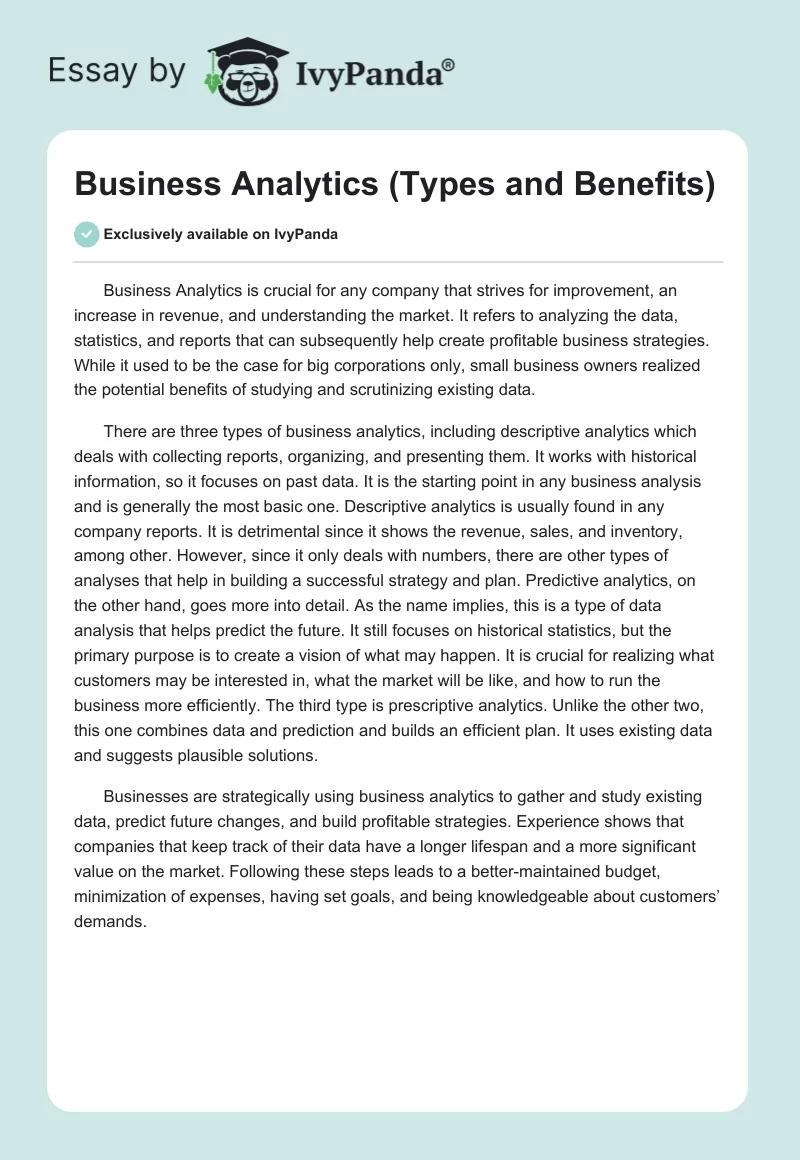Business Analytics is crucial for any company that strives for improvement, an increase in revenue, and understanding the market. It refers to analyzing the data, statistics, and reports that can subsequently help create profitable business strategies. While it used to be the case for big corporations only, small business owners realized the potential benefits of studying and scrutinizing existing data.
There are three types of business analytics, including descriptive analytics which deals with collecting reports, organizing, and presenting them. It works with historical information, so it focuses on past data. It is the starting point in any business analysis and is generally the most basic one. Descriptive analytics is usually found in any company reports. It is detrimental since it shows the revenue, sales, and inventory, among other. However, since it only deals with numbers, there are other types of analyses that help in building a successful strategy and plan. Predictive analytics, on the other hand, goes more into detail. As the name implies, this is a type of data analysis that helps predict the future. It still focuses on historical statistics, but the primary purpose is to create a vision of what may happen. It is crucial for realizing what customers may be interested in, what the market will be like, and how to run the business more efficiently. The third type is prescriptive analytics. Unlike the other two, this one combines data and prediction and builds an efficient plan. It uses existing data and suggests plausible solutions.
Businesses are strategically using business analytics to gather and study existing data, predict future changes, and build profitable strategies. Experience shows that companies that keep track of their data have a longer lifespan and a more significant value on the market. Following these steps leads to a better-maintained budget, minimization of expenses, having set goals, and being knowledgeable about customers’ demands.

